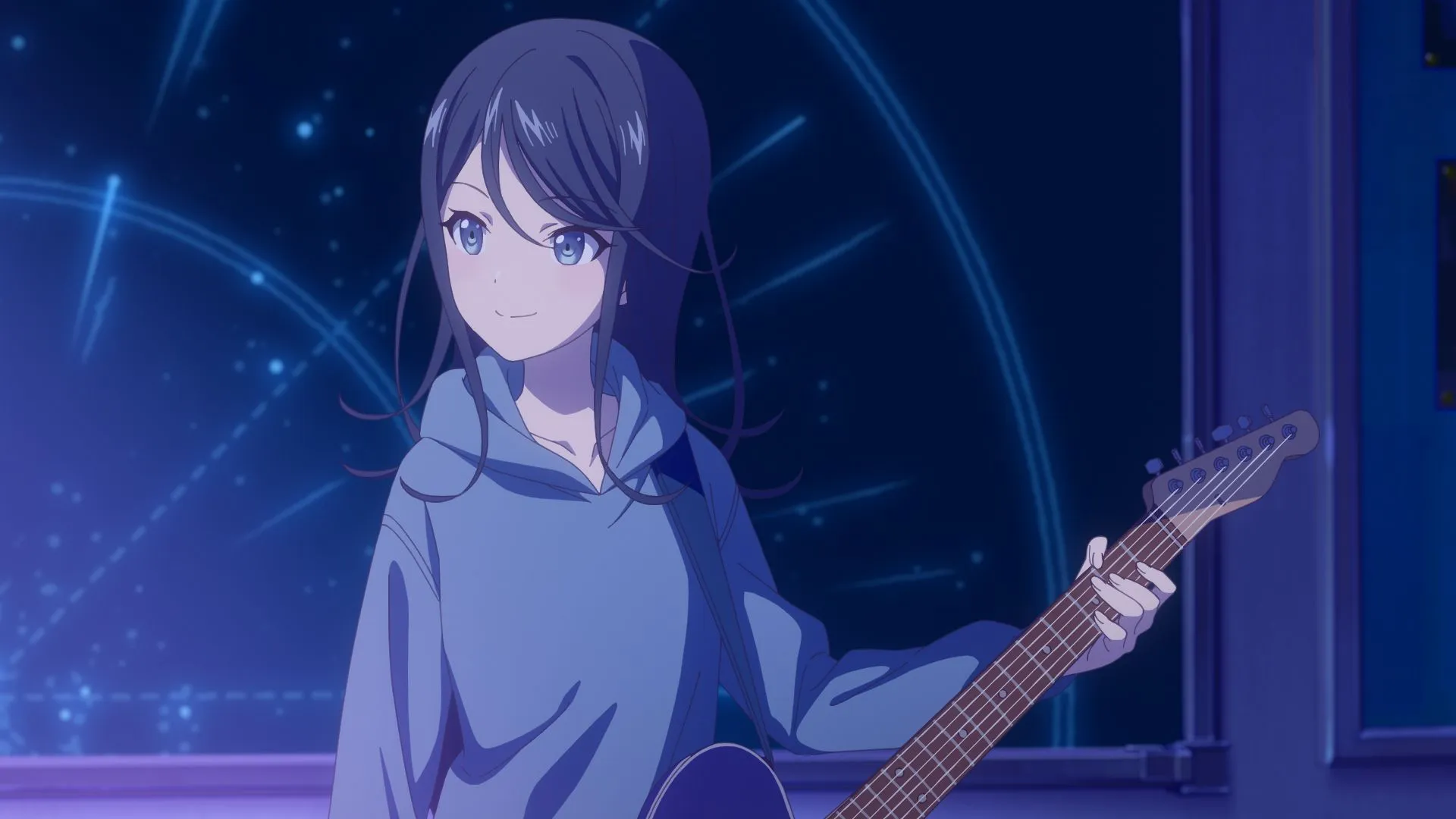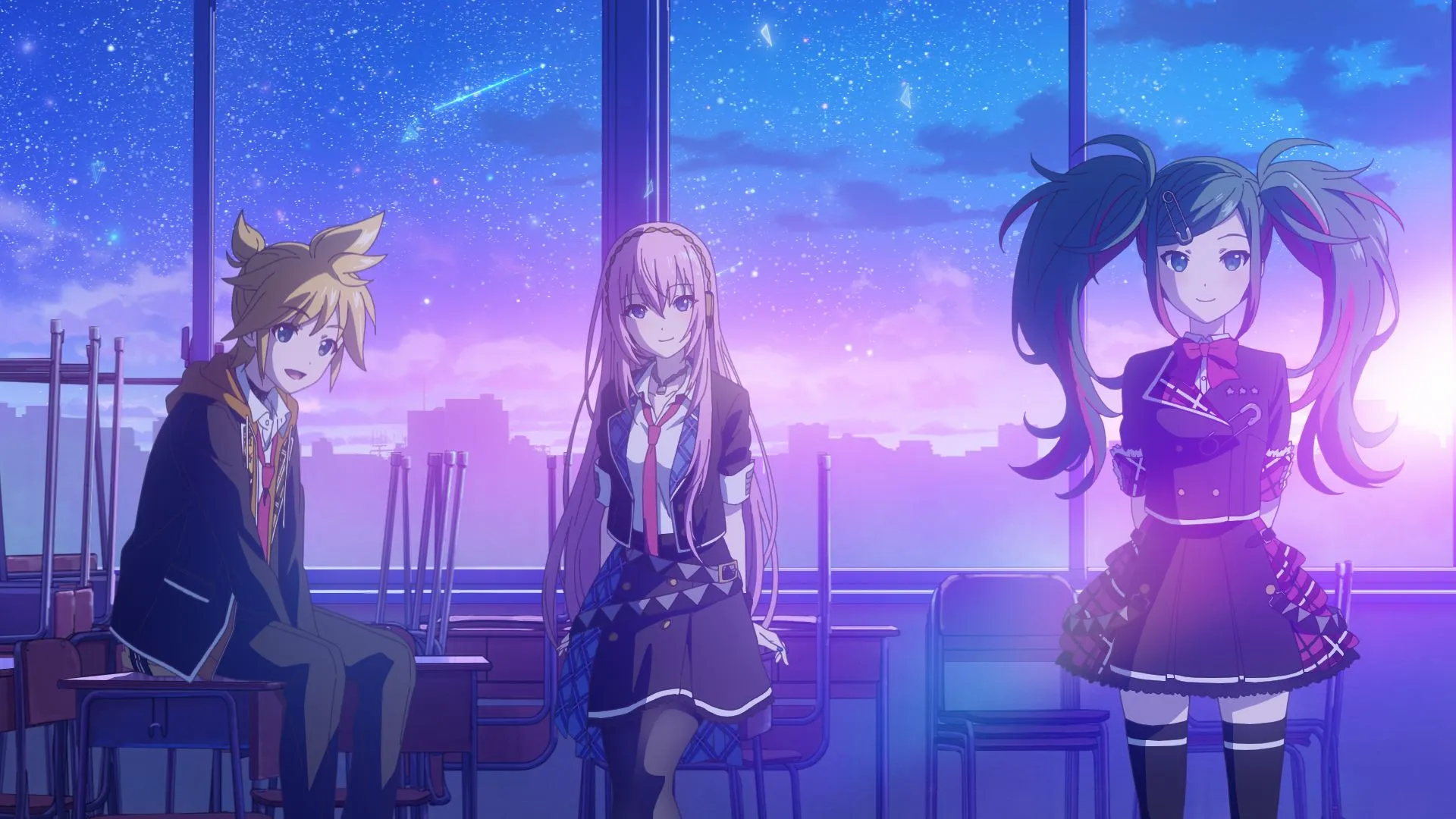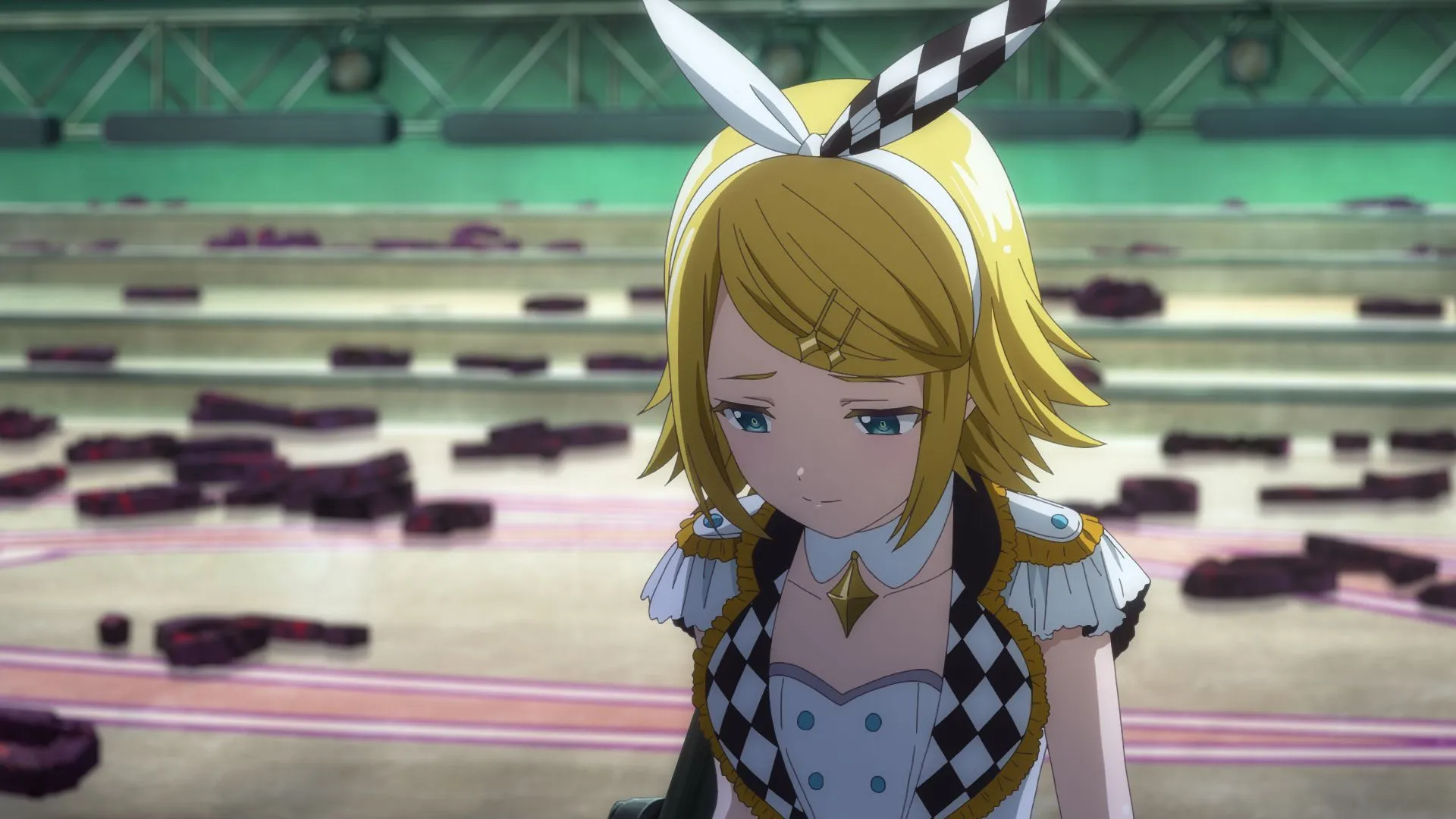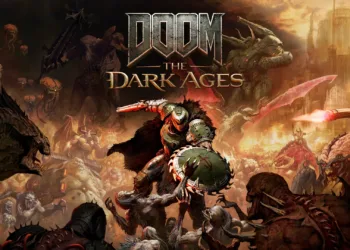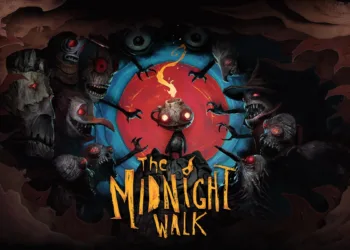Colorful Stage! The Movie: A Miku Who Can’t Sing spins a simple yet resonant premise: a silent variant of Hatsune Miku, stripped of her voice, drifts through a fractured digital realm known as the Sekai, while street performer Ichika—grounded in the tangible world—sets out to help her rediscover her song. Adapted from the mobile rhythm game Hatsune Miku: Colorful Stage! (Project SEKAI), the film cleverly translates its source’s gameplay loops—unit formation, track remixing, and score chasing—into interlocking narrative beats that drive both character growth and musical drama.
This hybrid of musical drama and fantasy balances quiet character moments—Ichika’s late‑night street concerts, Miku’s silent appeals—with vivid, high‑energy song sequences that mirror the game’s rapid‑fire satisfaction. Clocking in at 105 minutes, P.A. Works leverages its reputation for detailed animation to ensure each synchronized performance crackles with kinetic energy, yet still leaves room for reflective pauses.
Avid fans will relish seeing their favorite units reimagined on the big screen, but newcomers willing to lean into the film’s brisk pacing can still find an emotional through‑line. At stake is more than a return of Miku’s voice—it’s a meditation on isolation, creative expression, and the healing power of collaboration.
Narrative Flow & Structural Beats
From the first moment Ichika sets up her speakers on a moonlit street corner, her passion for music feels immediate and tactile—like booting up a familiar rhythm‑game level. Act I quickly introduces “Silent Miku,” a muted digital idol trapped in the fractured Sekai, her song reduced to flickering static. The inciting incident arrives when Ichika intercepts that signal, a classic call‑to‑adventure moment that establishes both her real‑world grit and Miku’s existential stakes.
Act II unfolds in what feels like replaying through distinct game stages. First, an idol‑pop circle envelops Ichika in bright pastels and synchronized choreography, teaching her that melody can convey warmth even without words. Next, a gritty rock ensemble shows up in a neon‑soaked Sekai, emphasizing raw emotion and the power of imperfection.
A surprise hip‑hop crew follows, using rhythmic vocal chops and street‑dance imagery to stress that connection can come through rhythm as much as lyric. Each unit’s mini‑arc illustrates a facet of emotional expression, mirroring how remixing a track in Colorful Stage! unlocks new creative possibilities.
The rapid transitions between these worldlets can invigorate or jar, depending on your tolerance for brisk pacing. At key turning points—when Miku finds her first crack of genuine sound or when Ichika falters under the weight of so many voices—the editing style echoes quick combo strings in a game, rewarding attentiveness but demanding focus.
In Act III, all the units merge in a multilayered performance that feels like a final boss remix, layering each group’s reinterpretation of Miku’s theme until her voice resurfaces. The emotional surge here isn’t just spectacle; it’s the payoff of every lesson learned. And while Miku’s confidence blossoms and Ichika’s stage presence solidifies, the film leaves us wondering which paths these characters might explore next—and how many more chapters await in their shared quest for song.
Key Players & Growth Arcs
Ichika bursts onto the screen carrying a portable speaker, her street‑performance roots giving the film a lived‑in energy. From the outset, her genuine care for others makes her feel indispensable; she anchors Miku’s fragile emotional recovery. As Ichika steps into each digital realm, she grows from eager novice to steadfast guide, her determination deepening with every encounter.
Silent Miku occupies the opposite side of the spectrum, drifting in muted solitude, her pleas reduced to flickering static. Each regained note becomes a small triumph over isolation, charting a clear arc from silence to song. At one point, Ichika falters under the pressure of Miku’s wavering signal—her raw frustration highlights the film’s embrace of human vulnerability.
Three units stand out: the idol‑pop circle whose tight choreography radiates warmth; a rock collective that channels frustration through jagged riffs; and a hip‑hop crew whose rhythmic wordplay underscores resilience. Band members swing between friendly competition and collaborative harmony, a dynamic that mirrors multiplayer modes where rivalry and teamwork coexist.
Some faces may feel obscure to newcomers, but the core emotions cut through, leaving echoes that surprise. Series veterans will catch subtle nods to each member’s backstory, but the emotional threads remain clear enough for casual audiences to follow. Which hidden melodies remain undiscovered?
Dual Realms and Digital Dreams
The film splits its canvas between Ichika’s gritty city streets—where she sets up impromptu concerts beneath flickering streetlights—and the kaleidoscopic Sekai, a multiverse of pocket realities tailored to each music group. In the real world, every muted cheer and passing car honk grounds Ichika’s journey in tangible stakes. Slip through a portal, though, and you land in environments that borrow from cyberpunk neon, pastel fairytales, or graffiti‑scrawled alleyways—each visual motif reflecting a band’s emotional core.
Sekai mechanics echo rhythm‑game design. Virtual singers materialize as data fragments; broken worlds pulse with static whenever Miku’s voice falters. Travel rules unfold without onscreen tutorials: Ichika follows audio cues and color trails, much like unlocking new stages in a game. The threat is clear—if Miku’s signal collapses, her existence in every realm dims.
Exposition stays lean, assuming familiarity with terms like Sekai or “unit formation.” Casual viewers may stumble over rapid realm‑hops or wonder why some settings suddenly shift from bright to shadowed. Yet these leaps underscore the film’s commitment to showing rather than telling.
Within Japanese media, virtual idols bridge music and interactivity—from Project Diva arcades to holo‑concerts. Western audiences might crave more context on Hatsune Miku’s cultural footprint or the mechanics behind these fragmented worlds. Which realm ultimately resonates most—and how might these portals expand in future chapters?
Animating Emotion: Frames That Sing
P.A. Works presents a largely hand‑drawn canvas enriched by selective 3D accents. Character art favors crisp silhouettes and bold palettes; Ichika’s muted denim contrasts with Miku’s glowing cyan highlights, instantly signaling their roles. Costume colors echo each performer’s musical style, from energetic pinks for the idol unit to gritty blacks and reds for the rock ensemble.
Every Sekai realm adopts its own visual identity: a neon‑lined urban sprawl with reflective puddles for the rock band; pastel cloudscapes and floating stages for the idol group; graffiti‑streaked hallways and pulsing streetlights for the hip‑hop crew. Light becomes a narrative tool—harsh backlighting underscores Miku’s moments of triumph, while soft spotlights emphasize her struggles. Shifting shadows mirror characters’ emotions, turning each frame into a mood board.
Performance scenes merge choreography with camera movement to match musical beats. Dancers’ limbs arc in sync with rhythm‑game prompts; sweeping tracking shots capture group formations, then snap to intimate close‑ups on key emotions—eyes glisten, breaths catch. Rapid cuts heighten climactic peaks; longer takes allow ensemble arrangements to breathe. Particle bursts and glitch‑line effects visualize Miku’s wavering signal, transforming audio data into kinetic light.
Technically, 3D models support concert crowds and instrument rigs without breaking the 2D linework style. Frame rates stay rock‑solid, slipping only in the densest sequences. Against minimalist musical films like On‑Gaku: Our Sound, this movie opts for a richer palette yet simplifies backgrounds when choreography intensifies, keeping focus on performers.
Which visual choices will define future chapters as new musical units take center stage?
Powered by the Beat: Music & Sound Design
The heart of this film pulses in its soundtrack, built around a theme by DECO*27 that threads every scene together. That single melody acts like a baseline riff in a rhythm game level—familiar yet constantly refreshed. Early on, you hear the track in its purest form, echoing Miku’s longing. As the story progresses, each band remixes it to reflect their style, turning one song into a suite of emotional signposts.
Standout unit performances include the idol‑pop ensemble’s bubbly take, where layered harmonies feel like a perfectly timed combo, and the rock band’s gritty guitar riffs, which rough up the melody into a cathartic release. The hip‑hop crew chops vocals into syncopated patterns, turning static into rhythm, and a children’s choir version adds surprising innocence, transforming the same notes into a lullaby‑like comfort. Arrangement choices—whether stripped‑back piano, distorted guitar, or vocal loops—highlight how production decisions shape our feelings.
New compositions sit beside familiar game tracks, creating a balance akin to bonus stages in Undertale: fans cheer at nostalgic references, while newcomers can latch onto fresh tunes without missing context. Sound mixing stays crisp; vocals never drown beneath instrumentation, and ambient cues—city noise, digital crackle—anchor the dual realms in reality and data. Every glitch effect, from soft static to full‑screen pixel bloom, signals Miku’s emotional fractures.
When Miku’s first clear note breaks through, the audience feels it like unlocking a hidden achievement. Those pauses before a final refrain—empty air filled only by breath—resonate as strongly as any crescendo. What new rhythms might emerge if the film’s remix engine keeps spinning?
Resonance Beyond the Screen
Miku’s missing voice serves as a vivid stand‑in for creative block and isolation. Watching her signal stutter against Ichika’s steady encouragement highlights how mentorship and genuine care can pull someone back from self‑doubt. When Ichika steps in, her empathy becomes a bridge between two worlds—she models the kind of unwavering support creative collaborators often need.
Each band’s take on Miku’s melody channels a different emotional palette. The idol group wraps the tune in bright optimism, the rock ensemble grinds it into fierce catharsis, and the hip‑hop crew reframes it as defiant resilience. Those reinterpretations echo how indie titles like Sound Shapes use remixed tracks to shift player perspective, reminding us that a single theme can speak joy, sorrow, or hope.
The film leans on a classic “underdog joins forces” structure, and while a few beat‑the‑odds clichés peek through, genuine teamwork moments cut deeper—especially when two contrasting units lock rhythms in unison. It raises a question: does the narrative ever outgrow its blueprint, or do these tropes become comfort food for fans?
This feels like a crafted love note to existing enthusiasts, yet those willing to embrace the film’s fast‑moving scenes can still tap into its heart. Which unheard notes lie waiting in the spaces between these performances?
Full Credits
Director: Hiroyuki Hata
Writer: Yoko Yonaiyama
Producers: Specific producer information is not listed in the available sources.
Cast: Saki Fujita, Ruriko Noguchi, Kento Itō, Rui Tanabe, Akina, Yui Ogura, Mayu Yoshioka, Ai Furihata, Rina Honnizumi, Tomomi Jiena Sumi, Fumiya Imai, Daisuke Hirose, Hina Kino, Machico, Shunichi Toki, Tomori Kusunoki, Rui Tanabe, Minori Suzuki, Hinata Satō
Editor: Ayumu Takahashi
Composer: Satoshi Hōno
The Review
Colorful Stage! The Movie: A Miku Who Can’t Sing
Colorful Stage! The Movie: A Miku Who Can’t Sing is a spirited musical drama that channels the energy of its rhythm‑game roots into striking visuals and emotional peaks. While its brisk pacing and dense lore may challenge newcomers, its heartfelt performances and inventive soundtrack underscore the film’s celebration of creative collaboration.
PROS
- Striking blend of game‑inspired pacing and cinematic storytelling
- Inventive soundtrack that reshapes a single theme across multiple styles
- Strong emotional core in Ichika and Silent Miku’s growing bond
- Vibrant Sekai designs that reflect each band’s identity
CONS
- Rapid scene shifts can overwhelm newcomers
- Large cast leaves some characters underdeveloped
- Sparse exposition assumes prior fan knowledge









































